Scanning Around With Gene: Keep on Truckin’

I had to drive to Los Angeles last week to deliver some bad news of the sort best done in person, and I wanted to get there as quickly as possible. That meant a drive down Interstate Highway 5, the major north/south route for the West Coast, which I usually avoid due to the 18-wheeler trucks that ply it.
Like so many other once-unique aspects of American life, the trucking industry — including trucks, truck stops, and even truck drivers — is now generic. It seems like most truckers are associated with a national chain, and truck stops all carry the same gear and serve the same bad fast food.
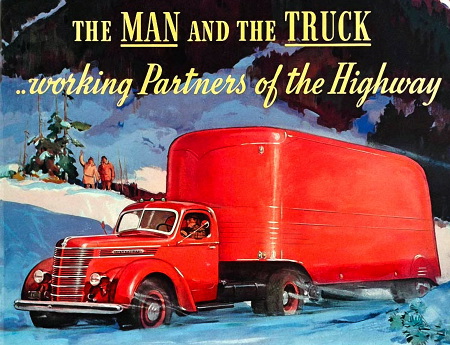
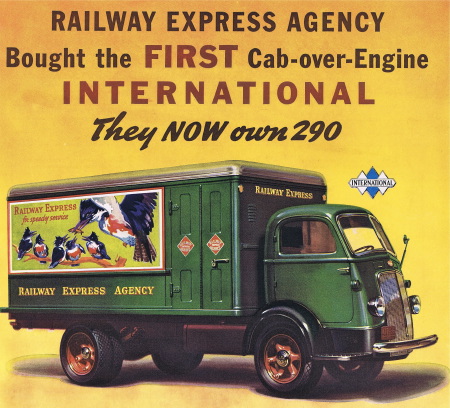
So on my return I decided to look back to a time when trucks were a little more unique and the romance of truck driving was blossoming. Nearly all of the ads this week are from the late 1930s through to the mid 1940s and appeared in issues of Fortune Magazine. Click on any picture for a larger version.
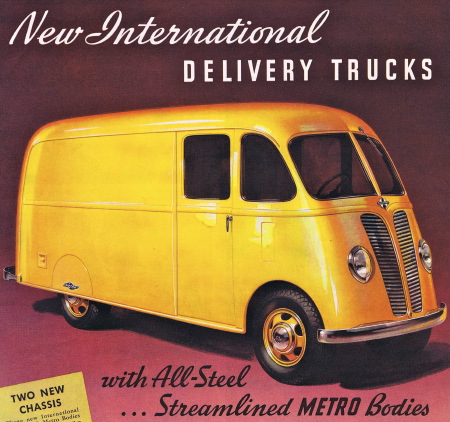
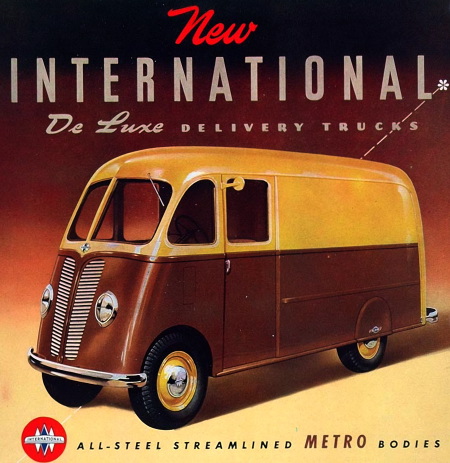
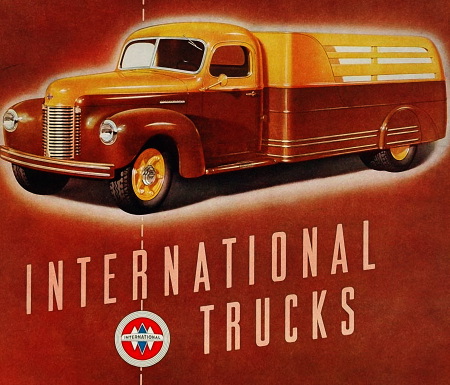
The first thing you’ll notice in the ads is that trucks weren’t always as big as they are now. Not only did technology limit engine size and weight loads, but many states had early restrictions designed to save soft-gravel roads from damage.
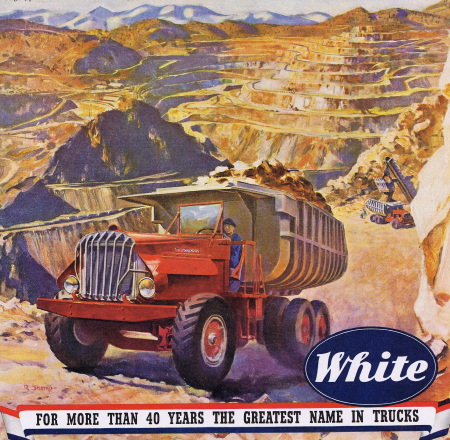
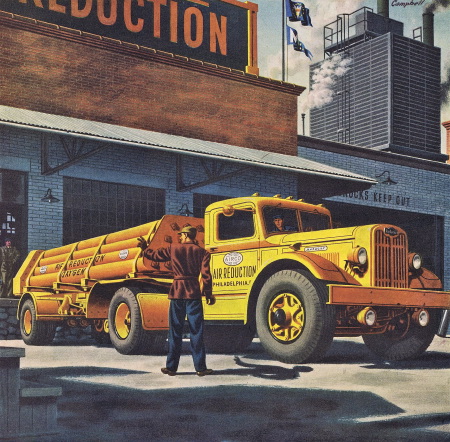
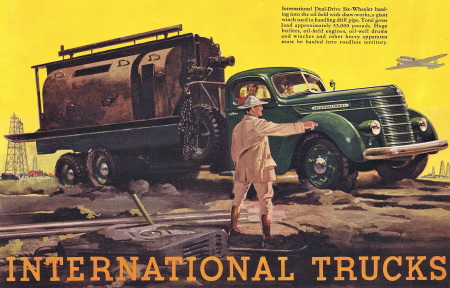
Up until the early 1900s, most freight was hauled by rail to cities along rail lines and then distributed rather crudely by horse-drawn cart or smaller motor vehicles and local short-line railroads. But as America grew it was clear that inter-state roads, not rail lines, were necessary to bring goods to more remote areas.
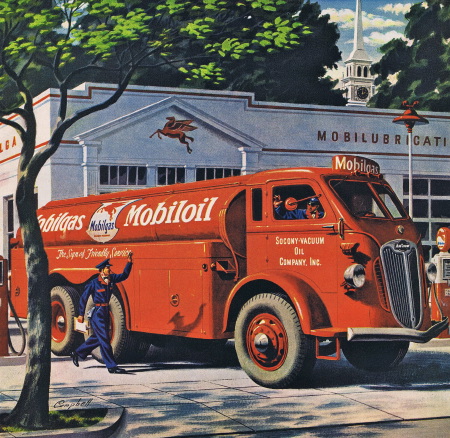
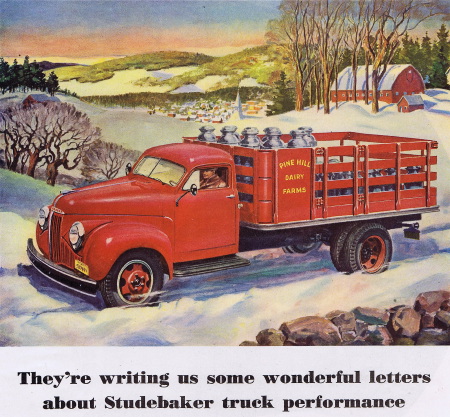
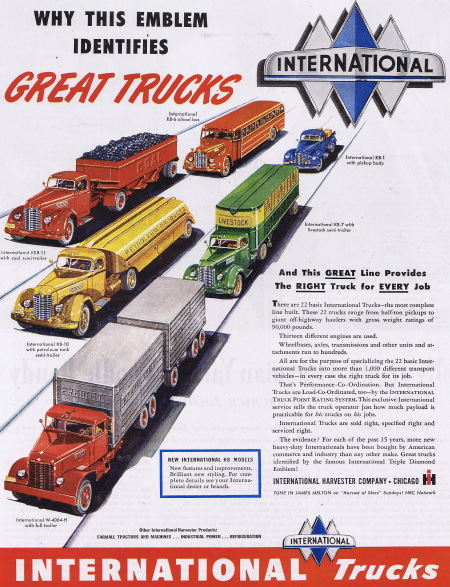
By 1910 the automobile industry had developed enough oomph to power larger vehicles with transmissions, tires, and engines suited to hauling weightier goods. By 1920 there were more than a million trucks on American roads.
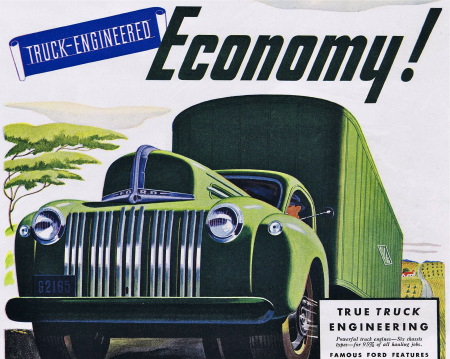
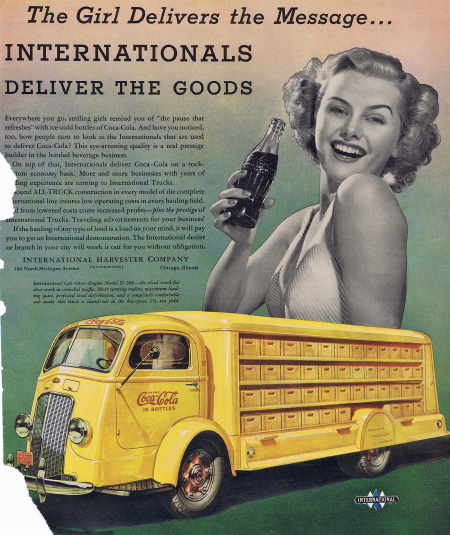
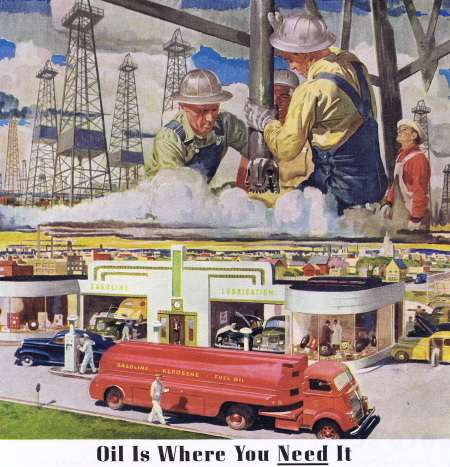
That surge resulted in government regulation and in 1935 Congress passed the Motor Carrier Act, which established standards for weight, size, and safety in the trucking industry. But there was still a confusing set of national and state rules, and most highways were state controlled.
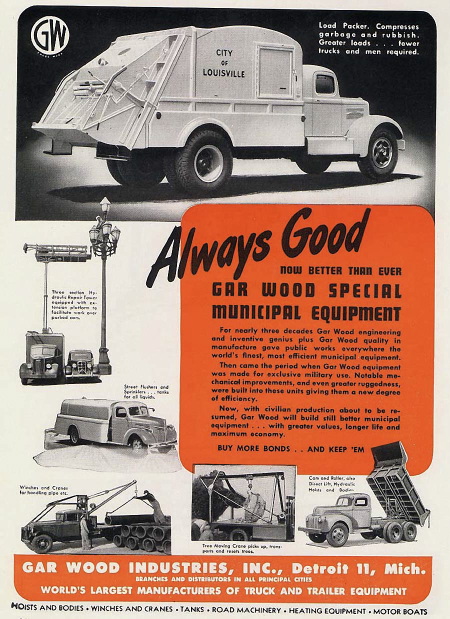
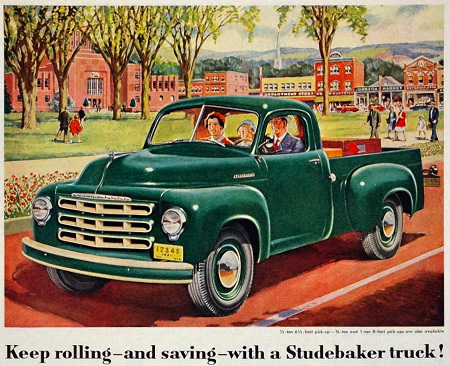
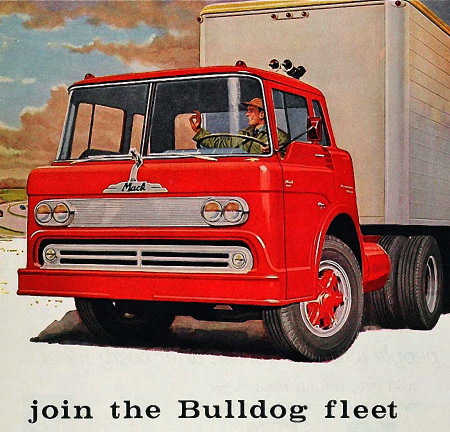
It took the 1956 Federal-Aid Highway Act to pull together a national grid of highways and feeder-routes that allowed trucks to get larger and move faster. It was about the same time that the idea of container trucks took off, making it easier for goods to be shipped via rail or truck without being re-packed.
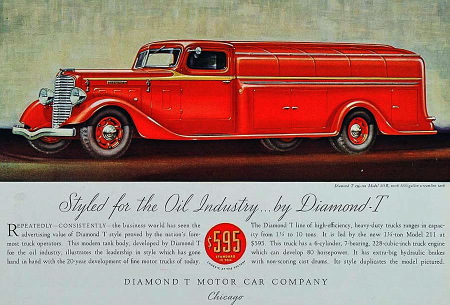
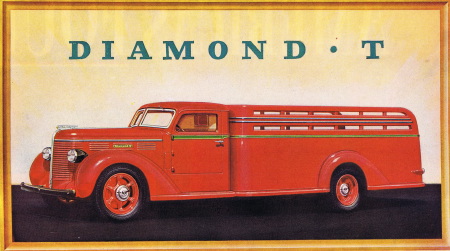
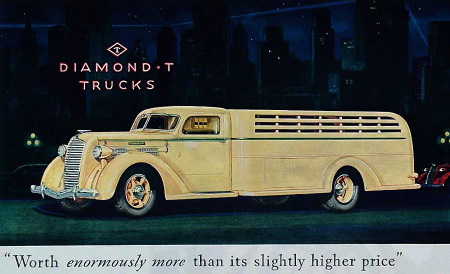
All of this led to much larger trucks and national trucking chains. Several popular truck manufacturers were started by shipping and logging companies that needed unique truck designs. Unlike the auto industry, which was designing cars for mass markets, truck companies took a more individual approach to design.
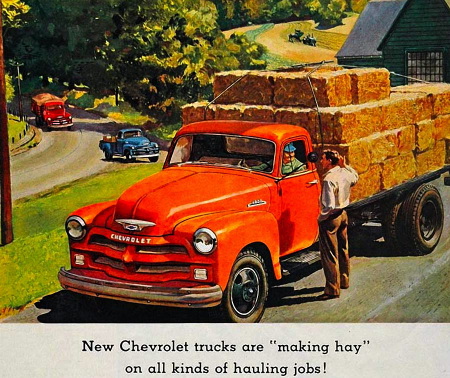
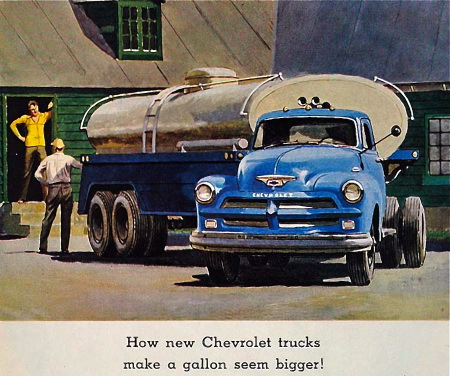
Shipping companies and truckers also tended to be more brand-loyal than car buyers, so manufacturers tried for highly stylized looks and colors. Since seeing a brand on the road was the best advertising possible, brand identity had to be more than just a name plate on the radiator.
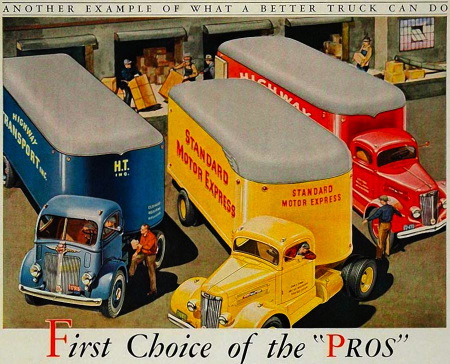
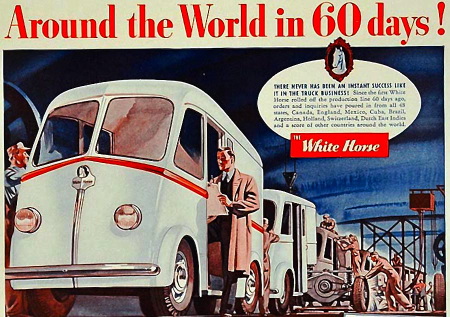
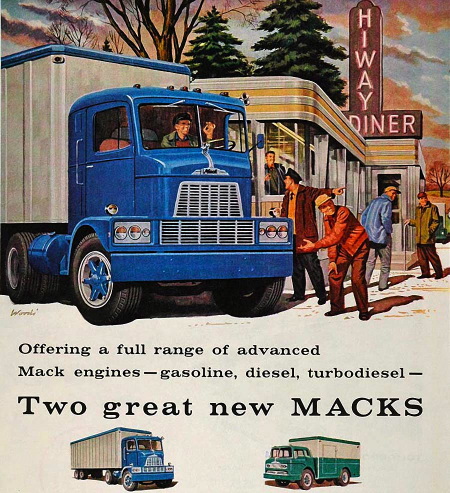
Many truck brands are long gone, and the few that are left are owned by large conglomerates or multi-national car companies, such as Volvo and Mercedes. These days, sales are based less on individual style and more on large multi-vehicle orders by UPS, FedEx, and similar companies.
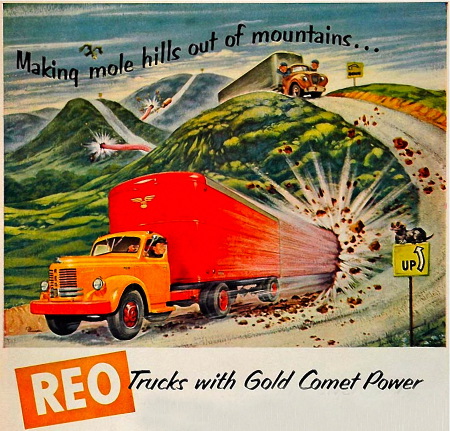
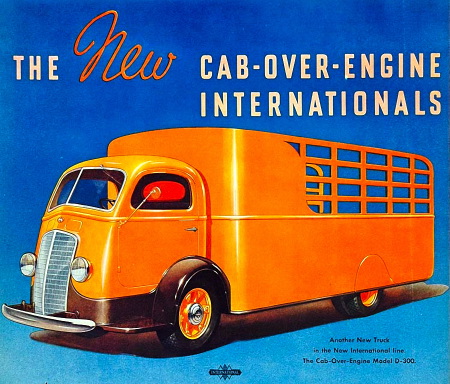
So much of the character of the trucking industry is gone, and the fast pace of commerce has eliminated the individual truck stops that once dotted the highways and byways of rural America. Truckers sleep in their cabs, watch DVD movies in their cabs, and talk more on cell phones than CB radios.
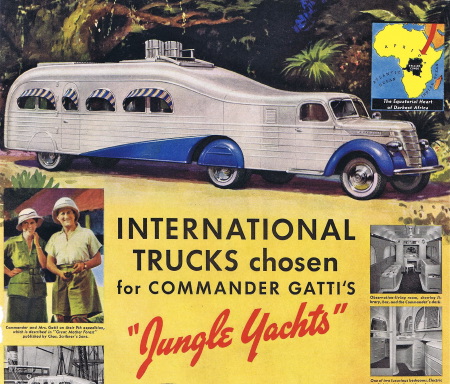
I don’t lament the changes in trucking — I’m sure they represent progress in efficiency and safety. But oh, how I would kill for Commander Gatti’s “Jungle Yacht” right about now. That and a CB radio (okay, make that an iPhone) and I’d be on the road again, for sure.
This article was last modified on May 17, 2023
This article was first published on May 15, 2009



